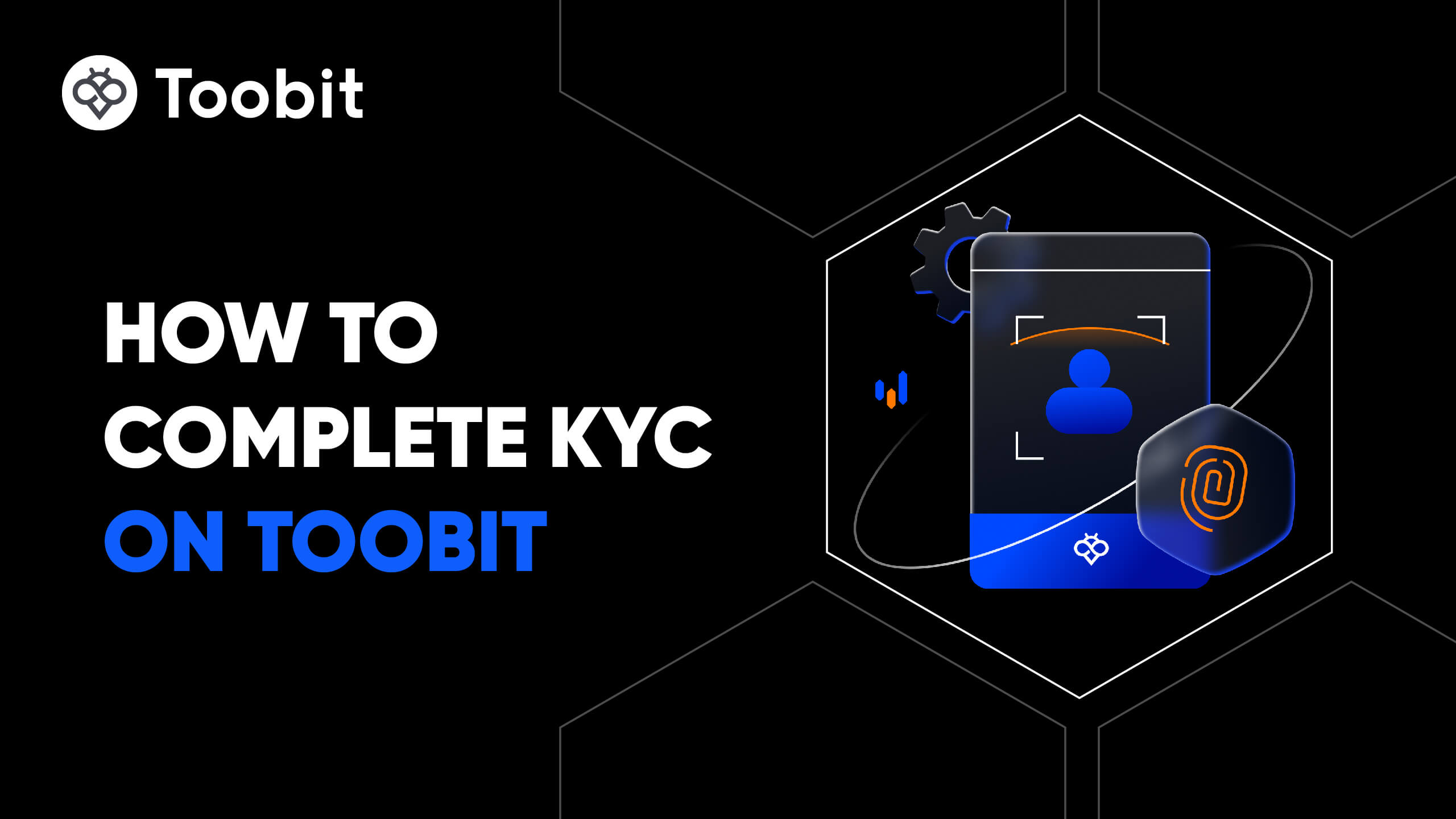NEAR Protocol price
NEARNEAR Protocol market info
Live NEAR Protocol price today in USD
How much is 1 NEAR worth in ?
About NEAR Protocol(NEAR)
NEAR Protocol price history
Why does the price of NEAR Protocol always fluctuate?
What factors affect the performance of NEAR Protocol prices?
Global NEAR Protocol prices
How to buy NEAR Protocol
Create your free Toobit account
Sign up on Toobit with your email address/mobile phone number and country of residence, and create a strong password to secure your account.
Verify your identity
Complete identity verification by submitting your personal details and a valid photo ID.
Add a payment method and buy NEAR Protocol (NEAR)
Add a credit/debit card or bank account after verifying your Toobit account. Use multiple payment options to buy NEAR Protocol on Toobit.
Trade NEAR perpetual futures
After signing up on Toobit and buying USDT or NEAR tokens, you can start trading derivatives, including NEAR futures and margin trading to increase your income.
Join NEAR copy trading with lead traders
After signing up on Toobit and successfully buying USDT or NEAR tokens, you can also start copy trading by following Lead Traders.
Where can I buy NEAR Protocol?
Buy crypto on the Toobit app
Sign up within minutes to purchase crypto via credit card or bank transfer.
Trade on Toobit
Deposit your cryptocurrencies to Toobit and enjoy high liquidity and low trading fees.
Video section — quick verification, quick trading

How to complete identification on Toobit and protect yourself from fraud
- 1.Log in to your Toobit account.
- 2.If you're new to Toobit, watch our tutorial on how to create an account.
- 3.Click on the profile icon in the upper right corner of the navigation bar, then tap on Identification page.
FAQ About NEAR Protocol (NEAR)
What Is NEAR Protocol (NEAR)?
NEAR is a decentralized application platform which is designed to enable the open web of the future and power its economy. It uses the same core underlying technology that made Bitcoin an unkillable currency and combines it with cutting edge advances in community consensus, database sharding and usability. On this web, everything from new currencies to new applications to new industries can be created, opening the door to a brand new future.How to Buy NEAR Protocol (NEAR)?
You can buy NEAR Protocol with USDT here on Toobit. Read our guide on How to Buy Crypto on Toobit for more information.What is NEAR Protocol (NEAR) Used for?
The NEAR token can be used to pay transaction fees within the NEAR Protocol eco-system and as a reward to transaction validators. NEAR can also be used to store data on the NEAR Protocol Blockchain. Binance has NEAR pricing information.What is NEAR Price Now?
Are you looking for NEAR Protocol (NEAR) Price? Live NEAR price is updated in real-time on Toobit.Where to Sell NEAR?
You can sell NEAR to USDT here on Toobit. Read our guide on How to Trade Spot on Toobit for more information.How to Withdraw NEAR on Toobit?
You can withdraw NEAR to USDT here on Toobit. Read our How to Withdraw Crypto on Toobit guide for more information.What are the Key Features of NEAR?
Each of the key problems faced by current platforms, their developers and their end-users are addressed below. More information about the specific implementation of these features is left to the following sections of this paper. 1. Usability First2. Scalability Second3. Efficient Development and Evolution 4. Real Decentralization5. A New Business Model for Developers and EntrepreneursWhat are NEAR Design Principles?
Both the design and development of the NEAR platform are guided by a handful of key principles. These principles reflect the problems inherent in both the centralized and decentralized systems of today. 1. Usability2. Scalability3. Simplicity4. Sustainable DecentralizationHow NEAR Works
NEAR is a cloud infrastructure that's operated by a community for the deployment and operation of decentralized applications. It combines features of a database decentralized with those of a platform serverless. This platform is enabled by a token that allows applications to interact in a new way. These features enable developers to create back-ends that are resistant to censorship for applications dealing with sensitive data such as money, identity, and assets, and open-state component components that interact seamlessly. The ""smart contracts"" are the components and back-ends of these applications, though we'll often call them ""applications"". This cloud's infrastructure is made up of an infinite number of nodes, which are run by people and organizations all over the world. They offer their hard drive and CPU space, whether it be on their laptops, or more likely, professional servers. The developers write smart contracts, and then deploy them as if it were to a single cloud. This is very similar to the way applications are deployed in existing centralized clouds. The application will run as long as there are at least a few members of the NEAR Community. Users will interact with the deployed application through familiar web and mobile interfaces, just like they do today. Developers pay monthly for their apps in a cloud hosted by Amazon and Google based on their usage, such as the number of requests made by their users. NEAR also requires users and developers to pay compensation to the community operators for their use. NEAR's pricing is based on simple metrics, which aren't impacted by factors such as system congestion. These factors are making it difficult for developers to create alternative blockchain-based system today.In a cloud that is centralized, the corporation in control makes decisions unilaterally. The NEAR cloud, which is run by the community, is decentralized. This means that updates are only accepted if a sufficient number of network participants agree. The community generates updates about the future of NEAR, and these are subject to a governance process that balances security and efficiency.How Is the NEAR Protocol Network Secured?
NEAR uses Doomslug, a variant of the Proof-of-Stake Consensus Mechanism. Doomslug relies on two rounds for consensus. A block is finalized once it receives the first communication. Validators can produce blocks in a near-instantaneous manner by taking turns, rather than competing on the basis of their stake.The NEAR Foundation, based in Switzerland, is a non-profit organization dedicated to maintaining the protocol, funding its ecosystem, and guiding its governance. The protocol also has a bridge built to Ethereum that allows users to move ERC-20 from Ethereum to NEAR.What are NEAR Economics?
The NEAR ecosystem is primarily driven by economic forces. This economy provides the incentives that allow participants to organize themselves without permission to perform the platform's core functions, while also creating strong disincentives to undesirable, irresponsible and malicious behavior. These incentives must exist on both the short-term and long-term in order for the platform's effectiveness. The NEAR platform, at its core, is a marketplace for willing participants. The operators of validator nodes, and other basic infrastructure, need to receive incentives to provide the services that make up the “community cloud.” On the demand-side, developers and users of the platform, who pay for its use, need to have a simple, consistent, and clear way to do this. Economic forces can be used to help support the ecosystem. At a micro-level, they can be used to create new business model by directly compensating developers who create the most useful applications. At a macro-level, they can be used to coordinate the efforts of an ecosystem of participants that are involved in everything from governance to education. In the following sections, we describe how each of these forces can be applied. We will start by benchmarking the economics of NEAR and the application of each of its key design principles.How does NEAR Protocol address the issue of high gas fees on the Ethereum network?
NEAR Protocol addresses the issue of high gas fees by using a different consensus mechanism called Nightshade. This allows for more efficient processing of transactions, reducing the cost for users and developers alike.What are some popular dApps built on NEAR Protocol?
Some popular dApps built on NEAR Protocol include Paras, a platform for creating and trading digital art, Sputnik DAO, a decentralized autonomous organization platform, and Flux, a decentralized marketplace for data storage and computation.How does NEAR Protocol support the development of decentralized finance (DeFi) projects?
NEAR Protocol provides a set of tools and infrastructure to support the development of DeFi projects, including features such as a secure and scalable smart contract platform, interoperability with other blockchain networks, and a focus on user experience to attract mainstream adoption.


